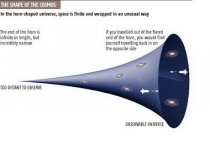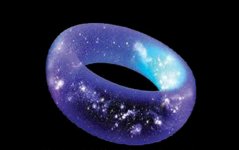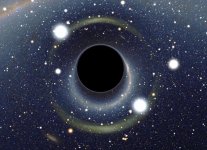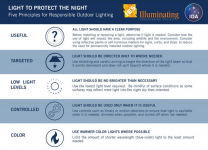The prime numbers have challenged and perplexed the greatest mathematicians for millennia. Shortly before he died, the brilliant Hungarian number theorist Paul Erdös said “it will be another million years, at least, before we understand the primes”.
I think that's an exaggeration. Maybe a thousand years. 😀
I was fascinated by this mathematical expression which generates the far more interesting transcendentals: Gelfond-Schneider Theorem
I actually tracked down a copy of benb's "Journey through Genius" by William Dunham:
I knew that one, as it goes. 🙂
I think that's an exaggeration. Maybe a thousand years. 😀
I was fascinated by this mathematical expression which generates the far more interesting transcendentals: Gelfond-Schneider Theorem
I actually tracked down a copy of benb's "Journey through Genius" by William Dunham:
G.H. Hardy said:The algebraic numbers are spotted over the plane like stars against a black sky; the dense blackness is the firmament of the transcendentals.
I knew that one, as it goes. 🙂
I'm hanging on in here, Steve.The prime numbers have challenged and perplexed the greatest mathematicians for millennia.
Like Miss Jean Brodie, I am dedicated to you in my prime. 🙂
The extremes are the one who knows everything about nothing and the one who knows nothing about everything.One can know a lot about a little, or know a little about a lot!
Be loud, be proud, be ignored. That's my motto! 😉
2^3 -1 is prime
2^4 -1 is not prime
2^5 -1 is prime
2^6 -1 is not prime
2^7 -1 is prime
And so on.
Can you prove that:
if p is prime then 2^p -1 is prime.
2^4 -1 is not prime
2^5 -1 is prime
2^6 -1 is not prime
2^7 -1 is prime
And so on.
Can you prove that:
if p is prime then 2^p -1 is prime.
I can't prove it, because it's not true! 😀
2^11 -1 is a counterexample.
These are Mersenne Primes which are hunted by the GIMPS internet project.
Mersenne primes generate perfect numbers, as well as being interestingly large. Record-breakers, in fact. But get quite rare.
I did just do a bit of checking and I think there are some tests for primality that are doable. Fermat, Euler and Wilson theorems can be calculated.
Reason I know this is I often update on the Mersenne Forum:
Soap Box - mersenneforum.org
"Mystery Economic Theater 2020" is their current and thoughtful incarnation and pun on Mystery Science Theater 3000.
Everybody liked MST3K, didn't they? Funny as heck homage to terrible B movies. 😎
2^11 -1 is a counterexample.
These are Mersenne Primes which are hunted by the GIMPS internet project.
Mersenne primes generate perfect numbers, as well as being interestingly large. Record-breakers, in fact. But get quite rare.
I did just do a bit of checking and I think there are some tests for primality that are doable. Fermat, Euler and Wilson theorems can be calculated.
Reason I know this is I often update on the Mersenne Forum:
Soap Box - mersenneforum.org
"Mystery Economic Theater 2020" is their current and thoughtful incarnation and pun on Mystery Science Theater 3000.
Everybody liked MST3K, didn't they? Funny as heck homage to terrible B movies. 😎
Good answer. You knew the trick ?I can't prove it, because it's not true! 😀
2^11 -1 is a counterexample.
Next, can you prove ?
If 2^p -1 is prime then p is prime.
That one IS true.
Mersenne primes always have prime exponents.
Mersenne prime - Wikipedia
Number 2. But I couldn't figure it out myself. I thought it would be a Little Fermat thing. But no. It's easier.
The proof uses the definition of a the sum of terms in a geometric series to quickly settle it:
Geometric series - Wikipedia
Mersenne primes always have prime exponents.
Mersenne prime - Wikipedia
Number 2. But I couldn't figure it out myself. I thought it would be a Little Fermat thing. But no. It's easier.
The proof uses the definition of a the sum of terms in a geometric series to quickly settle it:
Geometric series - Wikipedia
I thought it might be interesting to get back more on-topic:
What is the Universe expanding into...
The best analogy of Cosmic expansion I saw, was we are like ants living on the surface of a 2D sphere which is inflating like a balloon. So everything seems to be getting further apart.
Here's what Gauss knew:
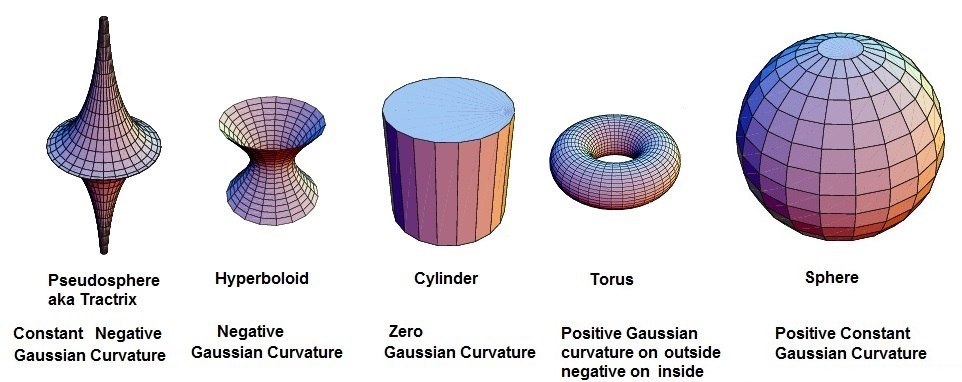
The reason he was interested in these things was he was asking how you can work out what sort of surface (or space) you live on or in just by measuring and counting things. Because it's not even obvious that we Earthlings live on a sphere unless you look from space.
Turns out the problem was related to something that Euler had got interested in. That old chestnut of counting X=V-E+F (Vertices, Edges and Faces) for a Platonic Solid and always getting 2.
When you do this sort of thing on a torus (doughnut) you get 0. This leads to an extension of the idea and says the Euler Characteristic X is 2-2g where g is the Genus of the surface.
All an incredibly interesting rabbithole to go down, IMO. WE really could understand geometry, symmetry and topology better to get a grip on the Cosmic and sub-atomic Worlds. 😎
What is the Universe expanding into...
The best analogy of Cosmic expansion I saw, was we are like ants living on the surface of a 2D sphere which is inflating like a balloon. So everything seems to be getting further apart.
Here's what Gauss knew:
The reason he was interested in these things was he was asking how you can work out what sort of surface (or space) you live on or in just by measuring and counting things. Because it's not even obvious that we Earthlings live on a sphere unless you look from space.
Turns out the problem was related to something that Euler had got interested in. That old chestnut of counting X=V-E+F (Vertices, Edges and Faces) for a Platonic Solid and always getting 2.
When you do this sort of thing on a torus (doughnut) you get 0. This leads to an extension of the idea and says the Euler Characteristic X is 2-2g where g is the Genus of the surface.
All an incredibly interesting rabbithole to go down, IMO. WE really could understand geometry, symmetry and topology better to get a grip on the Cosmic and sub-atomic Worlds. 😎
Our universe has curvature and twist at every point.
We are like ants living on a Moebius ring.
We are like ants living on a Moebius ring.
We dabbled with the curvature of the universe earlier in the thread, Steve. For instance, is it horn shaped or doughnut shaped? 
It is complex mathematics that attempts to describe the topology of the universe, but the images released to the general public prove hard to comprehend.

It is complex mathematics that attempts to describe the topology of the universe, but the images released to the general public prove hard to comprehend.
Attachments
Viewers in the UK will know that the BBC TV programme 'The Sky at Night' has been keeping us up to date with astronomy and space exploration since 1957.
Tonight, on BBC4, you are invited to watch its 800th episode, entitled 'Locked Down But Looking Up'.
BBC Four - The Sky at Night
Tonight, on BBC4, you are invited to watch its 800th episode, entitled 'Locked Down But Looking Up'.
BBC Four - The Sky at Night
TBH, I think "The Sky at Night" has been dumbing down astronomy embarrassingly for decades. 😱
Far better is this American publication which you can find at WHSmith if you get lucky:
Magazine | Astronomy.com
This sort of thing does nobody any service either:
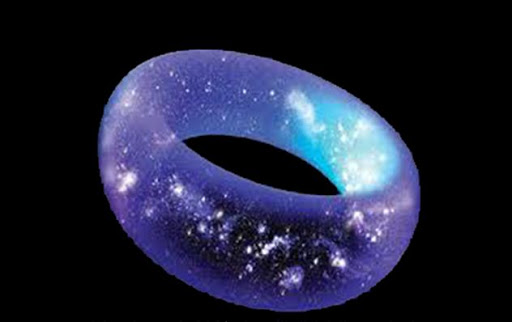
If you want to see a real live Torus in action in the Big Universe, you need a bit of imagination and a knowledge of an Einstein Ring around a Black Hole. Can you spot the doughnut?
A lot of people, especially String Theorists, think subatomic particles may be Tori or wrapped round Tori in some sense too. It may turn out unprovable whether the sub-atomic World uses point particles or circular strings, but the maths could work either way IMO.
Far better is this American publication which you can find at WHSmith if you get lucky:
Magazine | Astronomy.com
This sort of thing does nobody any service either:
If you want to see a real live Torus in action in the Big Universe, you need a bit of imagination and a knowledge of an Einstein Ring around a Black Hole. Can you spot the doughnut?
A lot of people, especially String Theorists, think subatomic particles may be Tori or wrapped round Tori in some sense too. It may turn out unprovable whether the sub-atomic World uses point particles or circular strings, but the maths could work either way IMO.
Attachments
That it has been making astronomy accessible to the public at large for decades would be a more accurate and less condescending comment in my opinion!TBH, I think "The Sky at Night" has been dumbing down astronomy embarrassingly for decades. 😱

Only my opinion, Galu.
Anyway, I'm going to make you an offer you can't refuse... 😀
How's about your choice of 408 Springer Text Books of a scientific nature for nothing! These are undergraduate and higher level. Springer are trying to help people out in Lockdown. Bravo!
Click on the links in the PDF attached.
I have already got "Cosmology for the Curious", "Quantum Mechanics", "Physics from Symmetry" and "Of cigarettes, high heels and other interesting things".
Thankyou, Springer. You are good people. 😎
Anyway, I'm going to make you an offer you can't refuse... 😀
How's about your choice of 408 Springer Text Books of a scientific nature for nothing! These are undergraduate and higher level. Springer are trying to help people out in Lockdown. Bravo!
Click on the links in the PDF attached.
I have already got "Cosmology for the Curious", "Quantum Mechanics", "Physics from Symmetry" and "Of cigarettes, high heels and other interesting things".
Thankyou, Springer. You are good people. 😎
Attachments
Last edited:
Wow, "Cosmology for the Curious" is a cracker!
Cosmology for the Curious | SpringerLink
Maths is not much heavier than a vague understanding of Pi x R^2 and 4/3 Pi x R^3, but it's got everything I like, including aforementioned Gravitational Lensing. Lots of illustrations.
TBH, it's a bit String Theory, but answers the topic of his thread plausibly. Go get it. The price is right! 😎
Cosmology for the Curious | SpringerLink
Maths is not much heavier than a vague understanding of Pi x R^2 and 4/3 Pi x R^3, but it's got everything I like, including aforementioned Gravitational Lensing. Lots of illustrations.
TBH, it's a bit String Theory, but answers the topic of his thread plausibly. Go get it. The price is right! 😎
TBH, I think "The Sky at Night" has been dumbing down astronomy embarrassingly for decades. 😱
Far better is this American publication which you can find at WHSmith if you get lucky:
Magazine | Astronomy.com
This sort of thing does nobody any service either:

If you want to see a real live Torus in action in the Big Universe, you need a bit of imagination and a knowledge of an Einstein Ring around a Black Hole. Can you spot the doughnut?
A lot of people, especially String Theorists, think subatomic particles may be Tori or wrapped round Tori in some sense too. It may turn out unprovable whether the sub-atomic World uses point particles or circular strings, but the maths could work either way IMO.
The string theorists (i.a.o Ed Witten) have been at it for decades. They’ve produced some amazing math, but no breakthroughs in physics from what I have read.
The ‘Sky at Night’ simply brings astronomy (not astrophysics or physics) to within reach of Everyman. If it’s too light for you, there’s lots of heavier stuff out there to engage your curiosity- see YouTube for example for MIT lectures etc.
🙂
I think the BBC are just protecting their content so they can sell it to foreign and cable broadcasters. They do have some amazing stuff like Prof. Brian Cox's "The Planets" series.
Just a nudge to recommend Cosmology for the Curious | SpringerLink as a brilliant freebie. It has some good Standard Model Physics in it too.
The problem with Astronomy, and I like doing Astronomy with 70mm binoculars and a small telescope, is you can't see the night skies much in most places anymore. Some people feel strongly about this, and I know I do: International Dark Sky Association | International Dark-Sky Association.
I will give credit to Patrick Moore, who presented "The Sky at Night" for many years. I still have a pocket-sized 1962 copy of "The Observer's Book of Astronomy", and it's still a useful guide to the stars and planets. When you can see them... 🙄
Just a nudge to recommend Cosmology for the Curious | SpringerLink as a brilliant freebie. It has some good Standard Model Physics in it too.
The problem with Astronomy, and I like doing Astronomy with 70mm binoculars and a small telescope, is you can't see the night skies much in most places anymore. Some people feel strongly about this, and I know I do: International Dark Sky Association | International Dark-Sky Association.
I will give credit to Patrick Moore, who presented "The Sky at Night" for many years. I still have a pocket-sized 1962 copy of "The Observer's Book of Astronomy", and it's still a useful guide to the stars and planets. When you can see them... 🙄
Attachments
See Page 248 in respect of my proximity to the Galloway Forest Dark Sky Park, as well as my memories of my Charles Frank refractor.The problem with Astronomy, and I like doing Astronomy with 70mm binoculars and a small telescope, is you can't see the night skies much in most places anymore.
Attachments
As a young boy, I really enjoyed Patrick's science fiction novels for young adults. Patrick MooreI will give credit to Patrick Moore...
A download of 'Mission to Mars' is available here if you want to revisit Patrick's narrative style: Mission to Mars : Patrick Moore : Free Download, Borrow, and Streaming : Internet Archive
Attachments
- Status
- Not open for further replies.
- Home
- Member Areas
- The Lounge
- What is the Universe expanding into..
